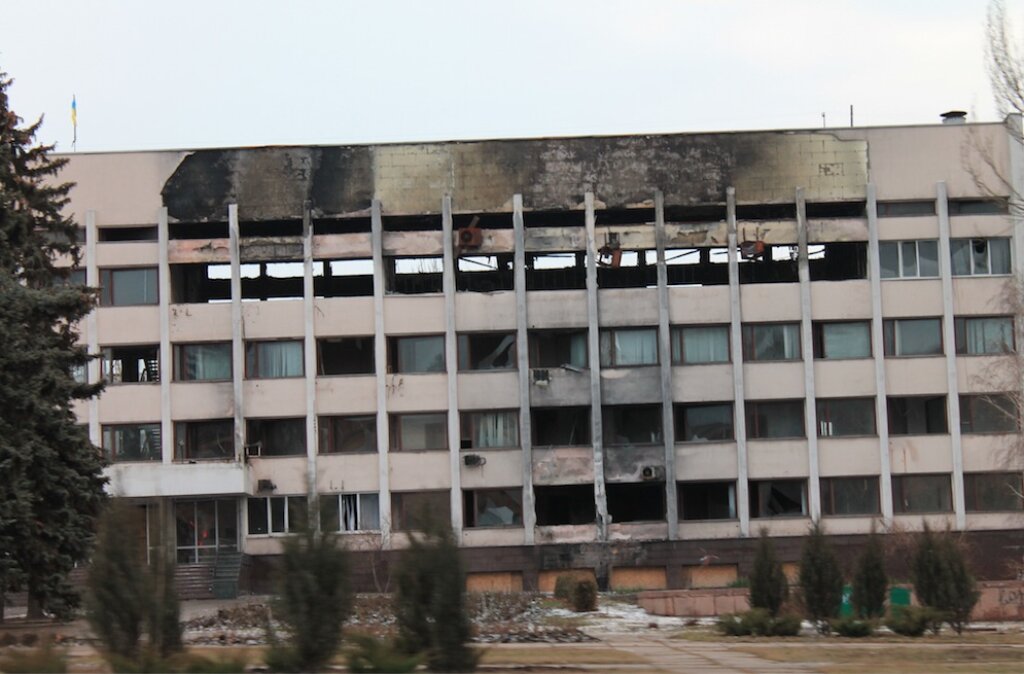Kimberly St. Julian-Varnon is a doctoral student in History at the University of Pennsylvania.
Early in Episode 694 of the This American Life podcast, "Get Back to Where You Once Belonged," hosts Emanuele Berry and Ira Glass are watching clips from the 1936 Soviet film Tsirk. Both hosts are entranced by the story's climax, in which a multiethnic array of Soviet citizens makes a show of accepting American circus performer Marion Dixon's mixed-race baby (played by Afro-Russian James Lloydovich Patterson). The film led Berry to wonder if the lack of racism in the Soviet Union was real, so she found a Black Russian to interview — Yelena Khanga.
Khanga, an Afro-Russian journalist and former television presenter, is known as the Russian Oprah. Many listeners, including those who directed me to the podcast, were surprised to learn that Black Russians existed. The interactions between Berry and Khanga are as intriguing as the content of Khanga’s story. In particular, Khanga’s experience with racism in the Soviet Union and the United States challenged Berry’s understanding of race’s role in non-African Americans' lives.
At times, Khanga’s responses to Berry's questions made sense considering Russia's highly specific context but occasionally came off as problematic to the interviewer and many Black American listeners. Khanga and Afro-Russians' experiences can help us understand the dynamics of race outside of the United States, shedding light on the liminal space Afro-Europeans occupy across the Atlantic.
My research examines multiple facets of Black experience in the Soviet Union, Russia, and the post-Soviet space. I currently work on how the unique cultural and social context of the Soviet Union in the 1920s and early 1930s provided African Americans escaping the Jim Crow United States a relative tabula rasa to interpret and understand their identities as Black people.
Yelena Khanga’s grandfather, Oliver Golden, is one of the African Americans who went to the Soviet Union before World War II. In many ways, Khanga is unique, even for Afro-Russians. She is the descendent of an African American and his Jewish wife. Her mother, Lily, is a mixed-race, first-generation Russian. Her father, Zanzibari politician Abdullah Khanga, returned to Zanzibar and was assassinated. Thus, Lily raised her with her grandmother Bertha. A Black woman raised Yelena in a mostly white city, Soviet-era Moscow.
Khanga’s discussion of her experiences dating white Russian men exposed the cleavages of race and discrimination in the "anti-racist" Soviet Union. Her mother often told her that she needed to be careful whom she dated because boys would only be interested in the color of her skin.
One of Khanga’s boyfriends, Vasya, was in love with her and even went against his family’s wishes to date her. What started as a tale of star-crossed lovers fighting family prejudices took a disturbing turn: according to Khanga, Vasya would call her “Monkey.” For Khanga, this nickname was not racist because it resembled a more conventional Russian pet name like "zaika [little rabbit]," which her female friends heard from their boyfriends on a regular basis. Khanga added that calling her "Monkey" was not racist because Vasya did not have any racist intent or realize he was being insulting. Berry is, understandably, incredulous.
Khanga’s reaction to Vasya’s nickname for her illustrates her specific understanding of the role of racism in Russian society. “I couldn’t explain to him that it was racist because I knew he was not racist," she explained to Berry. "That’s just what he called me.” Growing up with the Soviet ideological framing of racism as a backward product of capitalism, Khanga was not conscious of institutional racism in her upbringing. Thus, for her, racism could only be a product of not of malice, but of ignorance, to be rectified through education and contact with people of other races. Khanga's view of racism is not unique among Afro-Russians. In recent articles about the Afro-Russian experience, interviewees described their encounters with racism through the prism of ignorance.
Khanga's understanding of racism led to heartbreak in the United States. She fell in love with an African American man to whom she hoped to become engaged. However, a disagreement over their treatment at a restaurant led to their breakup because he felt “we would never understand each other,” due to her not seeing the racial "pressure points" that shaped his life.
Khanga’s hardships with dating and finding acceptance as a Black woman in Russia and America illustrates important issues of sexuality, exotification, and belonging for people of color in the post-Soviet region. Khanga longed to visit the United States to find a sense of community and a man who could love her. She describes her dream man as “tall and black.” The man she did meet played music and sports, just as she did. Still, her initial desire for romantic love with a Black man speaks to Khanga’s isolation in the Soviet Union and suggests that Russian men exotified her after all.
Isolation understood more generally was a key feature of Khanga’s life in the Soviet Union. She had her mother and grandmother, two positive female forces who made sure she did not feel shame about her Blackness, but her interactions with other Soviet children and teenagers made her feel like an outsider. She mentions asking her mother why she was “ugly” and why her facial features were different from those of her classmates. In response, her mother shared pictures from a magazine she calls Black and Lovely. It is disheartening to hear Khanga explain that, once she showed the magazines to her friends to demonstrate to them that she was, in fact, a beautiful Black girl, they told her it was strange.
Berry is surprised when Khanga discusses these episodes because she assumed there was at least a small community of Black Russians who could provide Khanga with solace. The isolation Khanga experienced is often hard for African Americans like Berry and me to understand, since home and family are often the two sources of safety and community that protect us physically and spiritually from American society's racism.
However, Black Russians like Khanga lacked this sense of community. In a recent Calvert Journal article, Afro-Russians born before and after the Soviet Union's collapse shared their upsetting experiences with isolation and instances of estrangement with their mothers and maternal family lines because of their mixed heritage.
Herein lies the paradox of the Soviet Union’s portrayal of itself as an anti-racist state. While many African Americans were able to gain economic opportunities that were not possible for them in the United States, nearly all had returned home by the beginning of the Second World War. The next wave of people of color to travel to the Soviet Union came in the 1950s, as Khrushchev invited African students to study in the USSR as part of the nation's push to influence the decolonization movement on the African continent. The children born as a result of mixed-race relationships between Soviet citizens (mostly women) and African students were often left alone to face increasing racial discrimination when their fathers returned to their home countries.
Race relations in the Soviet Union got so bad that, in 1963, an African student from Ghana was murdered. African students took to the streets to protest the Soviet government’s response to the crime and their own mistreatment as Black students.
Unfortunately, the current situation for Afro-Russians and African residents in Russia has shown little improvement. There have been dozens of attacks on Black people and visible minorities in Russia in the past two decades, as well as a marked increase in the number of members in Russian white supremacist skinhead gangs.
Even the BLM protests in the United States have impacted race relations in Russia. Over the summer, the Russian Lives Matter movement began in response to Russian police brutality and quickly became a hashtag filled with racist imagery of the American protests. In June, a Russian taxi driver denied a ride to an African student, openly admitting that he, the driver, was a racist.
These instances of racism, Afro-Russians' experiences, and the isolation Khanga experienced in both childhood and adulthood speak to the diversity of Black experience in Russia. These phenomena also beg the question, how did the region go from making an apparently anti-racist film like Tsirk to one in which Africans and Afro-Russians are afraid to go out alone at night? Several scholars, myself among them, are actively seeking answers to this question. Examining the dynamics of race and racism in Russia and the Soviet Union reveals how white supremacy can manifest in society, shedding light on the effects of cultural and social context on minority understandings of racism and prejudice.



